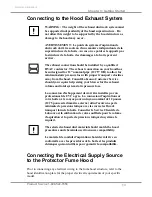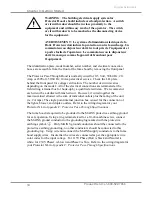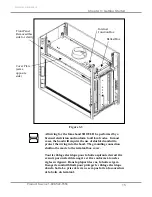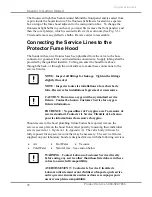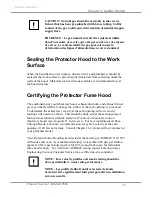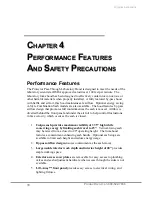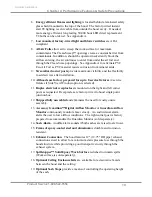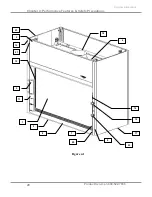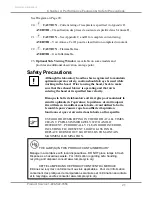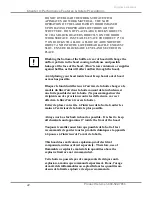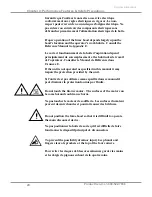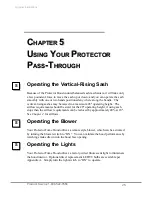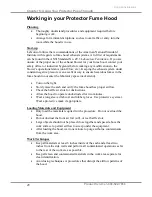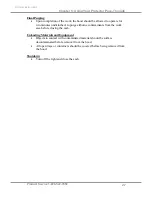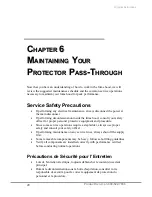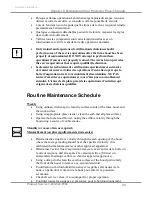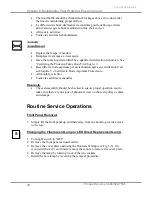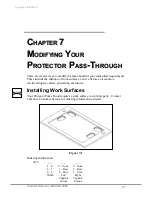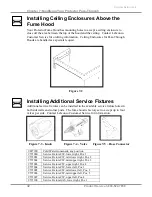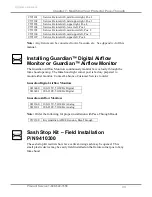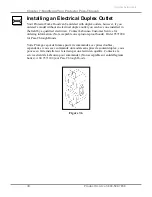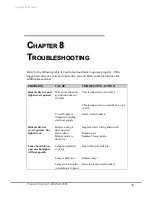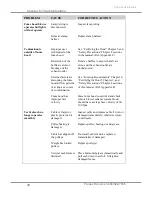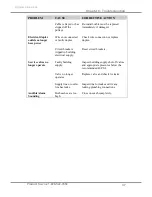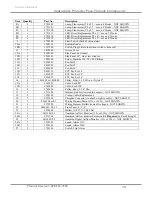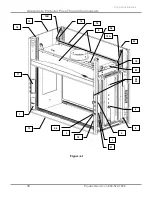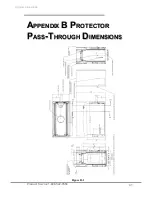
Chapter 5: Using Your Protector Pass-Through
Product Service 1-800-522-7658
26
Original instructions
Working in your Protector Fume Hood
Planning
Thoroughly understand procedures and equipment required before
beginning work.
Arrange for minimal disruptions, such as room traffic or entry into the
room while the hood is in use.
Start-up
Labconco follows the recommendations of the American National Standard
Institute with regards to fume hood exhaust systems. A full list of requirements
can be found in the ANSI Standard No. Z9.5
Laboratory Ventilation
. If you are
unsure of the proper use of the exhaust blower for your fume hood, contact your
safety officer or industrial hygienist before making any modifications to the
blower’s operational status (on/off/low, etc.). Keeping the exhaust system under
constant negative pressure is an excellent way to ensure hazardous fumes in the
fume hood do not enter the laboratory space inadvertently.
Turn on the light.
Slowly raise the sash and verify the fume hood has proper airflow.
Check the baffle air slots for obstructions.
Allow the hood to operate unobstructed for two minutes.
Wear a long sleeved lab coat and rubber gloves. Use protective eyewear.
Wear a protective mask if appropriate.
Loading Materials and Equipment
Only load the materials required for the procedure. Do not overload the
hood.
Do not obstruct the front air foil (sill), or rear baffle slots.
Large objects should not be placed close together and spaced above the
work surface to permit airflow to sweep under the equipment.
After loading the hood, wait one minute to purge airborne contaminants
from the work area.
Work Techniques
Keep all materials at least 6 inches inside of the sash and at least two
inches from the side walls and perform all contaminated operations as far
to the rear of the work area as possible.
Keep all clean and contaminated materials in the work area separate for
clear identification.
Avoid using techniques or procedures that disrupt the airflow patterns of
the hood.


